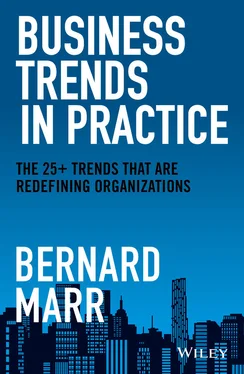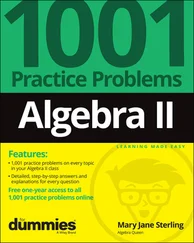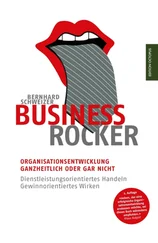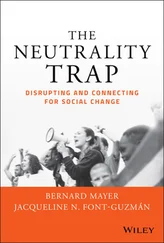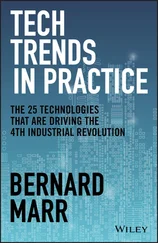Fusion is not to be confused with fission , the energy source in current nuclear power stations, which is created by splitting an atom's nucleus. Fusion , which is what powers the Sun, is created when two light atoms fuse into one under extreme temperature and pressure conditions – and because the mass of the newly created single atom is less than the original two atoms, the “spare” mass is given off as energy. Maintaining the extreme temperatures and intense pressure needed has proven difficult, but this is where recent progress has been made, largely thanks to advances in magnet technology. And this means we may see a nuclear fusion reactor deliver a net power output by 2035.
Green hydrogen is the other zero-carbon energy source that has tempted scientists for decades. When hydrogen burns, the only by-product is water, which is what makes hydrogen such a tempting energy source. Unfortunately, the traditional process for producing hydrogen involves exposing fossil fuels to steam, which obviously isn't very green at all. That is why this traditional process is known as “gray hydrogen.”
In contrast, green hydrogen splits water into hydrogen and oxygen, creating no other by-products. This is done via a process of electrolysis, which, historically, has taken so much electricity that it has made green hydrogen unfeasible. That may change thanks to renewable electricity sources. As excess renewable electricity is becoming available on the grid, that excess energy could, in theory, be used to drive the electrolysis of water. What's more, electrolysis machines are becoming more efficient. As such, some companies are already working to develop electrolyzers that can produce green hydrogen as cheaply as gray hydrogen within the next decade. 22 For sectors that rely on gas and coal, where wind and solar power isn't feasible, green hydrogen could be a vital part of the solution.
This chapter has thrown a lots of information and technical jargon at you, so let's sum up with a few practical lessons and takeaways for business leaders:
One of the key takeaways from this chapter is the convergence and interaction between all these different tech trends, and the sheer pace of change. This is what makes the fourth industrial revolution so different from the previous three. As such, simply bolting one new technology (such as machine learning) onto existing systems and processes isn't enough. Rather, organizations may need to rethink their entire operations and constantly redefine their business. Gone are the days of incremental tech upgrades; we're entering an era of continual and rapid evolution.
With this in mind, businesses that are “digital natives” or “born digital” are better prepared for the constant influx of new technologies. Traditional organizations, with their (often) expensive legacy systems, face a tougher road. Not only will they need to invest in new skills, capabilities, and technology (sometimes by partnering with more agile startups), but they may need to enact a cultural shift as well, toward a culture of continual learning and agility.
It's vital all organizations approach these new technologies strategically. Adopting technology for technology's sake is never a good idea; rather, organizations must look to prioritize and deploy new technologies in a way that delivers maximum returns for their business. This will be different for each company.
Now that we've taken a broad look at the global and technology trends shaping our world, let's drill down to some specifics. In the next part, we'll explore some specific sectors and see how they transform themselves.
1 1. IDC's Global StorageSphere Forecast Shows Continued Strong Growth in the World's Installed Base of Storage Capacity; IDC; https://www.idc.com/getdoc.jsp?containerId=prUS46303920
2 2. Prediction: 80% Of Enterprise IT Will Move to the Cloud By 2025; Forbes; https://www.forbes.com/sites/oracle/2019/02/07/prediction-80-of-enterprise-it-will-move-to-the-cloud-by-2025/
3 3. DNA Data Storage Is Closer Than You Think; Scientific American; https://www.scientificamerican.com/article/dna-data-storage-is-closer-than-you-think/
4 4. Number of internet of things (IoT) connected devices worldwide in 2018, 2025 and 2030; Statistica; https://www.statista.com/statistics/802690/worldwide-connected-devices-by-access-technology/
5 5. Sea Hunter Will Operate with Carrier Strike Group, as SURFDEVRON Plans Heavy Test Schedule; USNI News; https://news.usni.org/2020/01/21/sea-hunter-usv-will-operate-with-carrier-strike-group-as-surfdevron-plans-hefty-testing-schedule
6 6. In China, Alibaba's data-hungry AI is controlling (and watching) cities; Wired; https://www.wired.co.uk/article/alibaba-city-brain-artificial-intelligence-china-kuala-lumpur
7 7. 2020 sees huge increase in records exposed in data breaches; TechRepublic; https://www.techrepublic.com/article/2020-sees-huge-increase-in-records-exposed-in-data-breaches/
8 8. COMB: largest breach of all time leaked online with 3.2 billion records; Cybernews; https://cybernews.com/news/largest-compilation-of-emails-and-passwords-leaked-free/
9 9. Big Ideas 2021; Ark Invest; https://research.ark-invest.com/hubfs/1_Download_Files_ARK-Invest/White_Papers/ARK%E2%80%93Invest_BigIdeas_2021.pdf
10 10. @IBM; Twitter; https://twitter.com/ibm/status/877599373768630273?lang=en
11 11. The future of blockchain and market disruptors; Deloitte; https://www2.deloitte.com/us/en/insights/topics/understanding-blockchain-potential/global-blockchain-survey.html
12 12. First permitted 3D-printed house hits the market for $300k; Builder; https://www.builderonline.com/building/building-enclosure/first-permitted-3d-printed-house-hits-the-market-for-300k_o
13 13. He Jiankui: Baby gene experiment “foolish and dangerous”; BBC News; https://www.bbc.com/news/health-48496652
14 14. Cocoa CRISPR: Gene editing shows promise for improving the “chocolate tree”; Penn State University; https://news.psu.edu/story/521154/2018/05/09/research/cocoa-crispr-gene-editing-shows-promise-improving-chocolate-tree
15 15. Newlight Technologies; https://www.newlight.com/
16 16. In possible climate breakthrough, Israel scientists engineer bacteria to eat CO2; Times of Israel; https://www.timesofisrael.com/in-possible-climate-breakthrough-israel-scientists-engineer-bacteria-to-eat-co%E2%82%82/#:~:text=Sue%20Surkes%20is%20The%20Times%20of%20Israel's%20environment%20reporter.&text=In%20a%20remarkable%20breakthrough%20that,carbon%20dioxide%20rather%20than%20sugar
17 17. We are witnessing a revolution in genomics – and it's only just begun; World Economic Forum; https://www.weforum.org/agenda/2019/06/today-you-can-have-your-genome-sequenced-at-the-supermarket/
18 18. Jenax J. Flex battery; https://jenaxinc.com/
19 19. Future batteries, coming soon: Charge in seconds, last months and charge over the air; Pocket-lint; https://www.pocket-lint.com/gadgets/news/130380-future-batteries-coming-soon-charge-in-seconds-last-months-and-power-over-the-air
20 20. 3 Major Materials Science Breakthroughs – and Why They Matter for the Future; Singularity hub; https://singularityhub.com/2020/05/21/3-major-materials-science-breakthroughs-and-why-they-matter-for-the-future/
21 21. Scientists just got closer to making nuclear fusion work; World Economic Forum; https://www.weforum.org/agenda/2019/05/nuclear-fusion-could-solve-the-world-s-energy-problems-and-scientists-just-got-closer-to-making-it-work/
22 22. Top 10 Emerging Technologies of 2020; World Economic Forum; http://www3.weforum.org/docs/WEF_Top_10_Emerging_Technologies_2020.pdf
PART II RETHINKING KEY SECTORS
Building upon the global shifts and tech mega-trends outlined in Part I, in Part IIwe'll look at the implications for some key sectors, including opportunities, challenges, and some brief examples of exciting projects and initiatives. (You'll find many more real-world examples across Parts IIIand IV.)
Читать дальше
